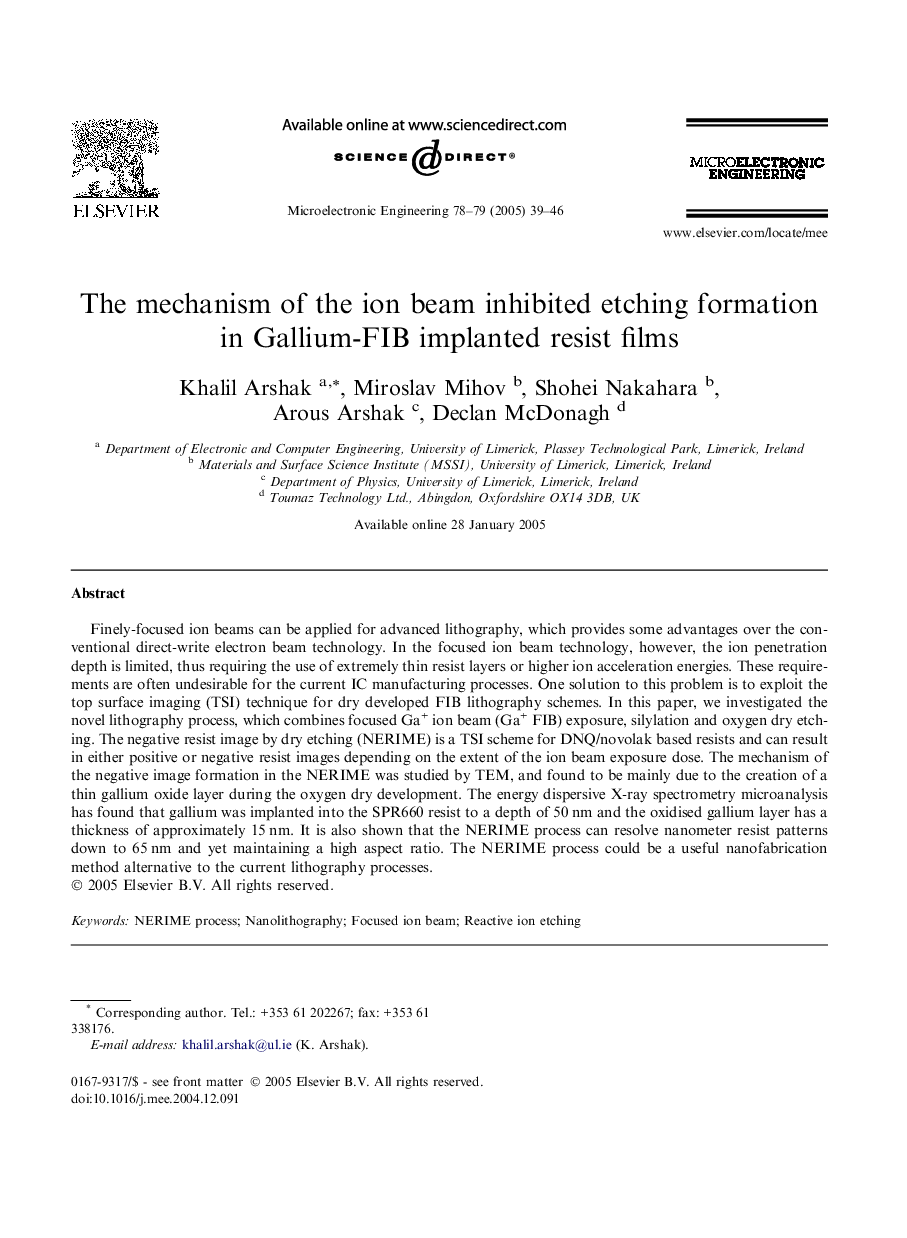| کد مقاله | کد نشریه | سال انتشار | مقاله انگلیسی | نسخه تمام متن |
|---|---|---|---|---|
| 9670551 | 1450404 | 2005 | 8 صفحه PDF | دانلود رایگان |
عنوان انگلیسی مقاله ISI
The mechanism of the ion beam inhibited etching formation in Gallium-FIB implanted resist films
دانلود مقاله + سفارش ترجمه
دانلود مقاله ISI انگلیسی
رایگان برای ایرانیان
کلمات کلیدی
موضوعات مرتبط
مهندسی و علوم پایه
مهندسی کامپیوتر
سخت افزارها و معماری
پیش نمایش صفحه اول مقاله

چکیده انگلیسی
Finely-focused ion beams can be applied for advanced lithography, which provides some advantages over the conventional direct-write electron beam technology. In the focused ion beam technology, however, the ion penetration depth is limited, thus requiring the use of extremely thin resist layers or higher ion acceleration energies. These requirements are often undesirable for the current IC manufacturing processes. One solution to this problem is to exploit the top surface imaging (TSI) technique for dry developed FIB lithography schemes. In this paper, we investigated the novel lithography process, which combines focused Ga+ ion beam (Ga+ FIB) exposure, silylation and oxygen dry etching. The negative resist image by dry etching (NERIME) is a TSI scheme for DNQ/novolak based resists and can result in either positive or negative resist images depending on the extent of the ion beam exposure dose. The mechanism of the negative image formation in the NERIME was studied by TEM, and found to be mainly due to the creation of a thin gallium oxide layer during the oxygen dry development. The energy dispersive X-ray spectrometry microanalysis has found that gallium was implanted into the SPR660 resist to a depth of 50Â nm and the oxidised gallium layer has a thickness of approximately 15Â nm. It is also shown that the NERIME process can resolve nanometer resist patterns down to 65Â nm and yet maintaining a high aspect ratio. The NERIME process could be a useful nanofabrication method alternative to the current lithography processes.
ناشر
Database: Elsevier - ScienceDirect (ساینس دایرکت)
Journal: Microelectronic Engineering - Volumes 78â79, March 2005, Pages 39-46
Journal: Microelectronic Engineering - Volumes 78â79, March 2005, Pages 39-46
نویسندگان
Khalil Arshak, Miroslav Mihov, Shohei Nakahara, Arous Arshak, Declan McDonagh,